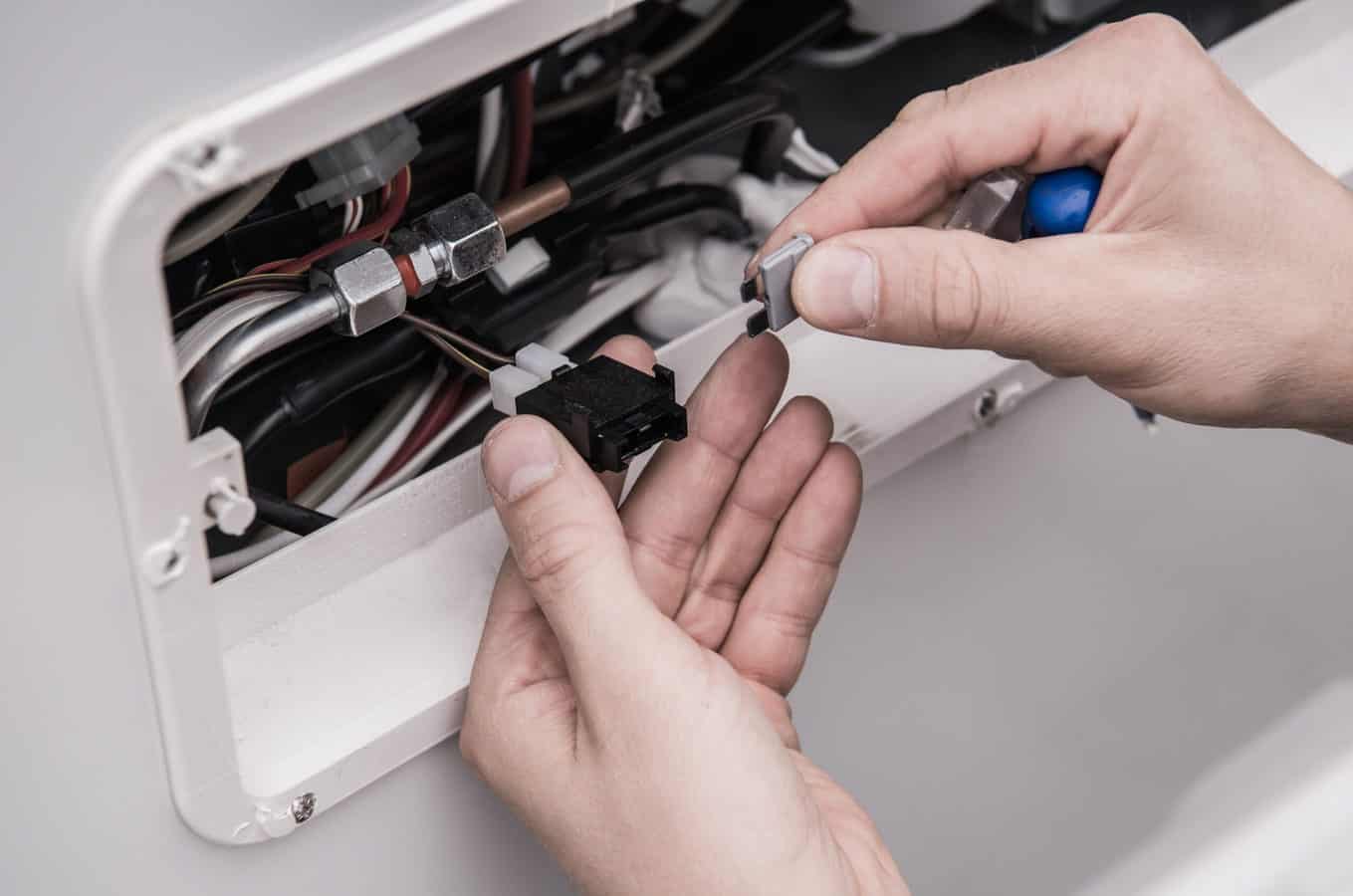
Every RV owner knows that their RV can be a home away from home when on the road. It’s one of the many benefits of having an RV. Just like your home, you want your RV to be a welcoming and cozy space.
Achieving a fresh and inviting smell is important when you will be not only driving, but eating, sleeping, and relaxing in your RV. With rising concern about the toxicity of the products we commonly use, RV owners are asking if trying to figure out from multiple online sources whether or not a ho are the right choice to use to keep their RVs smelling fresh.
The answer to this question may surprise you. We will take a look at the multiple types of car air fresheners on the market and address whether these products are safe and effective.
Types of Car Air Fresheners
There are all kinds of way to mask unpleasant smells. Because we live in a society heavily populated with drivers, products to keep your vehicle smelling fresh can be found in many retail establishments. The scents range from fruity, musky, to crisp. There is a scent for everyone. Here are some of the types of car air fresheners on the market:
Hanging Cardboard Fresheners
These car air fresheners are scented cardboard shaped like trees or other objects. They are typically hung from the rear-view mirror.
Gel Containers
This type of car air fresheners uses bead shaped gel to either absorb odors or mask odors with a fragrant scent.
Vent Clips and Plug-ins
These types of car air fresheners are scented gel-filled devices placed over car vents that release fragrance when ventilation air passes through them.
Aerosol Sprays
Aerosol sprays are some of the oldest types of car air fresheners. They mask odors with scent. Some aerosol sprays contain ingredients that break down odor-causing bacteria.
Toxins in Car Air Fresheners and Their Effects
These products may be easy to find but don’t assume that they are completely harmless. Even products labeled as natural can be chock-full of chemicals that are known to cause health issues. Many air fresheners use carcinogens as well as volatile organic compounds (VOCs). These components can mean bad news for your health. A plug-in air freshener can contain more than twenty different VOCs. Greater than one-third are classified as toxic or hazardous under federal laws.
Your skin can become irritated and inflamed if you directly touch gel container air fresheners. They are also toxic to pets and children if they manage to consume the gel beads.
It’s not just plug-in and gel container air fresheners that can be problematic. The other types of car air fresheners mentioned can irritate sensitive nasal passages and aggravate allergies and asthma suffers. Some of the types of harmful chemicals commonly found in air fresheners include:
Formaldehyde
This ingredient is known to cause cancer. It is also a respiratory irritant. If you’ve found your eyes, throat, or nose burning after being exposed to air freshener, this chemical could very well be the culprit.
Acetaldehyde
Acetaldehyde is a chemical that is found occurring naturally in nature. However, when in air fresheners it is a synthetic version that is used. It too is a respiratory irritant that can cause tissue lesions and dermatitis. This ingredient is believed to put those exposed at risk for cancer as well as reproductive issues.
Acetone
This ingredient is commonly found in paint thinners. It is considered a respiratory irritant. It also can cause harm to the nervous system when present in high concentrations.
Safe Ways to Keep Your RV Smelling Fresh
Now that you know the risks you are taking using commonly found car air fresheners, let’s take a look at some better ways you can keep your RV smelling fresh and pleasant.
1. Identify and Eliminate Sources of Odor
The first step in achieving an inviting smell in your RV is to identify the source of the offending smell. Masking the odor with chemicals will only temporarily give you a nice smell at best, and at worst the scent of your chosen air freshener will mix with the source of the odor, creating an unappealing hybrid funk. Once you have found the root of your odor problem, you can correct it making any air freshener you use more effective and pleasing. Before starting with an air freshener, begin by checking these common sources of odors:
Carpets and Curtains
Smoke and pet smells get trapped easily in carpets and curtains. If you don’t smoke or have a pet, carpets and curtains can still be a sponge for smells. Wash your curtains with a fragrance-free or scented detergent and give your carpet a thorough cleaning to eliminate odors.
Bathroom/Sewer
Your black water tank should be one of the first places you check when dealing with RV odors. Good ventilation is the best solution for a smelly bathroom and black water tank.
Sink and Shower Drains
When your bathroom and kitchen drains are not in use, they can start to grow bacteria that can produce offending odors. Take the time to clean and treat your drains when you know your RV will be down for a while and prior to beginning a trip in your RV.
Portable Water
Odor can also come from your fresh water tank. If your freshwater tank becomes a source of odor, you may need to sterilize your tank.
After you have made sure to remove any sources of odor, it’s a good idea to allow your RV to air out. Check your ventilation system to ensure it is functioning properly. If the weather permits, try opening your RV’s windows and allowing fresh air in. Sunlight is a natural disinfectant, but be careful not to expose your RV furniture for too long as high heat can cause damage.
2. Safe Car Air Fresheners
Once you have completed step one, it’s time to look into safe methods of giving your RV that inviting cozy home scent.
Diffusers
Diffusers that use natural essential oils are some of the safest and longer lasting methods of freshening the air.
Herbal Sachets
Herbal sachets can be used anywhere in your RV to infuse the air with a pleasant scent. They are cloth bags filled with dried herbs, spices, and fruit. Some of the things used to fill herbal sachets are lavender, rosemary, cinnamon, orange peel, and sage.
Diy Soy Candle Wax in a Jar
A quick and simple way to freshen the air in your RV is to repurpose a jar that has a lid and place your favorite soy candle wax inside. No fire required. The heat from inside your RV will cause the wax to release its fragrance.
Conclusion
It’s not necessary to expose yourself and your family to toxins in order to achieve a great smelling RV. Unfortunately, car air fresheners don’t list all of the chemicals they contain on their packaging. Keep your family and yourself safe and follow the steps outlined here so that you can enjoy a fresh worry-free scent.
Remember:
- Locate and remove the source of odor
- Air out your RV
- Use safe alternatives to chemical car air fresheners



